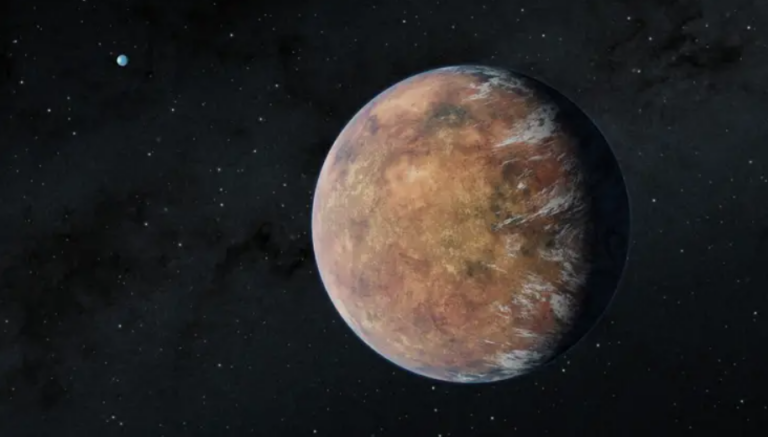In a recent discovery, a team of 50 astronomers from around the globe have confirmed the existence of exoplanet Wolf 1069 b. This exoplanet orbits a red dwarf star called Wolf 1069, which is only 31 light-years away from our planet. What makes this finding even more captivating is the chance that Wolf 1069 b could be a rocky planet, with a mass roughly 1.26 times that of Earth and a size about 1.08 times that of our planet.
One fascinating aspect of Wolf 1069 b is its position within the habitable zone of its star, hinting at the potential for liquid water on its surface.
Diana Kossakowski, an astronomer at the Max Planck Institute for Astronomy in Germany and the lead author of the recent study, announced that after examining the data from the star Wolf 1069, they identified a clear, subtle signal that points to the existence of a planet with a mass similar to Earth’s. This planet completes an orbit around the star every 15.6 days at a distance approximately one-fifteenth of the distance between the Earth and the sun.
In comparison, Mercury, the nearest planet to our sun, takes 88 days to complete an orbit, resulting in scorching surface temperatures reaching up to 800 degrees Fahrenheit (430 degrees Celsius).
Despite its significantly shorter orbital period of 15.6 days, Wolf 1069 b falls within the habitable zone of its star. This is due to the fact that its star is a red dwarf, much smaller than our sun, and Wolf 1069 b receives around 65% of the solar radiation that Earth receives. As a result, it maintains relatively favorable surface temperatures ranging from minus 139.27 degrees Fahrenheit (minus 95.15 degrees Celsius) to 55.13 degrees Fahrenheit (12.85 degrees Celsius), with an average of minus 40.25 degrees Fahrenheit (minus 40.14 degrees Celsius).
Wolf 1069 b possesses a unique feature of being tidally locked to its parent star, resulting in one side constantly exposed to daylight while the other side remains in perpetual darkness. Despite the absence of a day-night cycle like Earth, scientists speculate that the illuminated side of Wolf 1069 b could potentially support habitable conditions.
The remarkable identification of Wolf 1069 b was made possible through the utilization of the CARMENES (Calar Alto High-Resolution Search for M Dwarfs with Exoearths with Near-infrared and Optical Échelle Spectrographs) instrument, which is installed on the 11.5-foot (3.5-meter) telescope located at the Calar Alto Observatory in Spain.
Diana Kossakowski highlighted the exceptional collaborative effort involved in this discovery, stating, “As the lead author, I consider myself the ‘project manager’ of this planetary finding, bringing together brilliant minds in the field to accomplish something extraordinary. Astronomy thrives on collaboration, with numerous individuals united by the shared objective of exploring captivating planets beyond our own solar system.”
CARMENES utilizes two distinct spectrographs to observe astronomical objects in the visual and near-infrared spectra. The instrument detected Wolf 1069 b through the radial velocity method, which detects slight movements in a star’s position caused by the gravitational pull of an orbiting planet.
Wolf 1069 b, located just 31 light-years away from Earth, is now considered the sixth closest Earth-mass exoplanet within the habitable zone. Other planets in this category, listed by increasing distance, are Proxima Centauri b, GJ 1061 d, Teegarden’s Star c, and GJ 1002 b and c. Researchers note that global climate models suggest Wolf 1069 b may have biosignatures, although current technology cannot confirm this.
Diana Kossakowski predicts advancements in research technology, stating, “It may take another decade to achieve this capability, but it is essential to improve our facilities, especially since many potentially habitable worlds are only detected through radial velocity methods.”
Ongoing studies involve analyzing initial results from 3D global climate models and incorporating new radial velocity data to better understand the Wolf 1069 system.
Kossakowski stresses the need to study the atmospheres of planets detected only through radial velocity, like Wolf 1069 b, as many intriguing worlds closer to us fall into this category. She suggests that future technologies could allow for such studies in the coming decades, hinting at the possibility of discovering extraterrestrial life within our lifetimes.
Do not forget to share your opinion with us to provide you with the best posts !





0 Comments